A Non-Disclosure Agreement (NDA) is the name given to a binding confidentiality agreement that prevents unauthorized disclosure of confidential information, trade secrets, know-how, customer lists, pricing strategies, product roadmap, source code, design drawings, research data, formulas, and marketing plans shared by the parties. NDAs have become standard in scenarios such as startup investor negotiations, software development collaborations, freelance outsourcing arrangements, supplier–manufacturer relationships, M&A due diligence, employee onboarding, and customer data sharing. We compiled the most common user search variations, “download NDA template,” “privacy agreement template Word,” “mutual NDA sample PDF,” into a single, organized list on TypeCalendar.
Table of Contents
Why Use a Ready-Made NDA Template?

Common drafting mistakes include: a vague definition of Confidential Information (“all information”); an incomplete list of exceptions; vague, hard-to-enforce penalty or liquidated damages clauses; omission of a return-or-destruction provision; and failure to implement controls over disclosure to employees, consultants, or subcontractors.
Ready-made Non-Disclosure Agreement template files maintain the logical order of these critical sections (Definition → Purpose → Usage Restrictions → Exceptions → Duration → Violation & Remedies → Jurisdiction). Thus, the user who searches for “NDA sample PDF download” or “confidentiality agreement sample Word” starts from the correct structure and only fills in the variable fields (party names, effective date, duration, jurisdiction).
Non-Disclosure Agreement Templates
TypeCalendar Non-Disclosure Agreement Template Collection
Each template is available in Word, Google Docs, standard PDF, and fillable PDF formats. Fields such as “Party Names,” “Effective Date,” “Term,” “Governing Law,” and the “Scope of Confidential Information” are easily customizable. The Google Docs versions support real-time team editing, while the Word and PDF files include a blank header area for quick logo placement. You can also complete and send the fillable PDF forms for e-signature or printing.
Our collection of 60+ free NDA templates standardizes the critical sections: Definitions → Purpose → Non-Use and Non-Disclosure → Exceptions → Term & Survival → Return or Destruction → Remedies → Governing Law → Miscellaneous.
Which NDA Template Should You Choose?
- Short-term, one-way (unilateral) disclosure: Short-Form Unilateral NDA
- Technology co-development: Mutual NDA + Technical Annex (Drawings / API Specs)
- New employee or intern onboarding: Employee NDA + Optional IP Assignment Addendum
- Investor pitch deck sharing: Light (Short-Form) Investor NDA (low friction, fast signature)
- Data analysis projects or SaaS integrations: B2B Data-Sharing Confidentiality Agreement
Download the Free Non-Disclosure Agreement Template Collection
All NDA (Non-Disclosure / Confidentiality) template packages on TypeCalendar are free, watermark-free, and optimized for fast editing. You can find all the versions you are looking for, such as “download NDA sample”, “confidentiality agreement template Word”, “mutual confidentiality agreement template PDF”, on a single page, and fill them in within minutes.







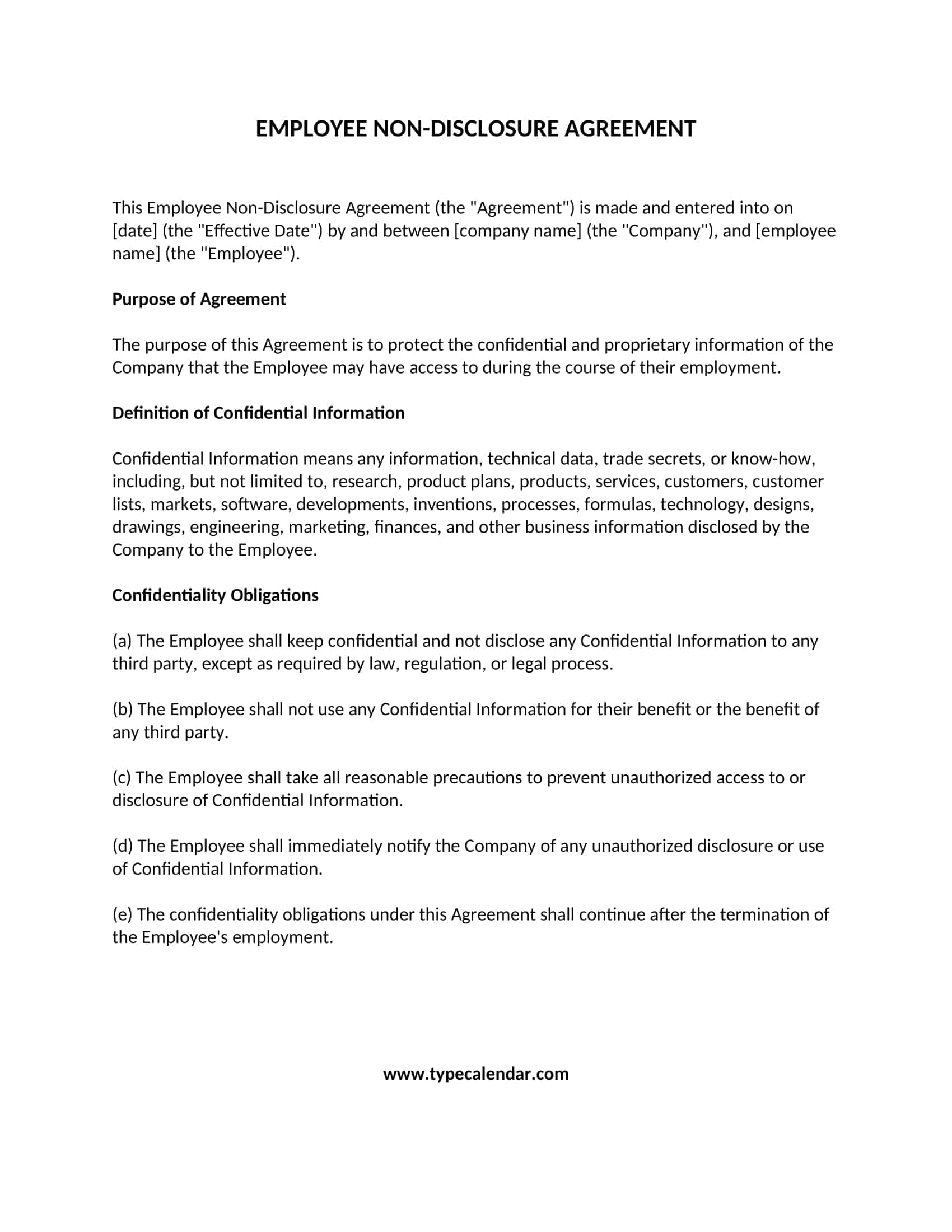
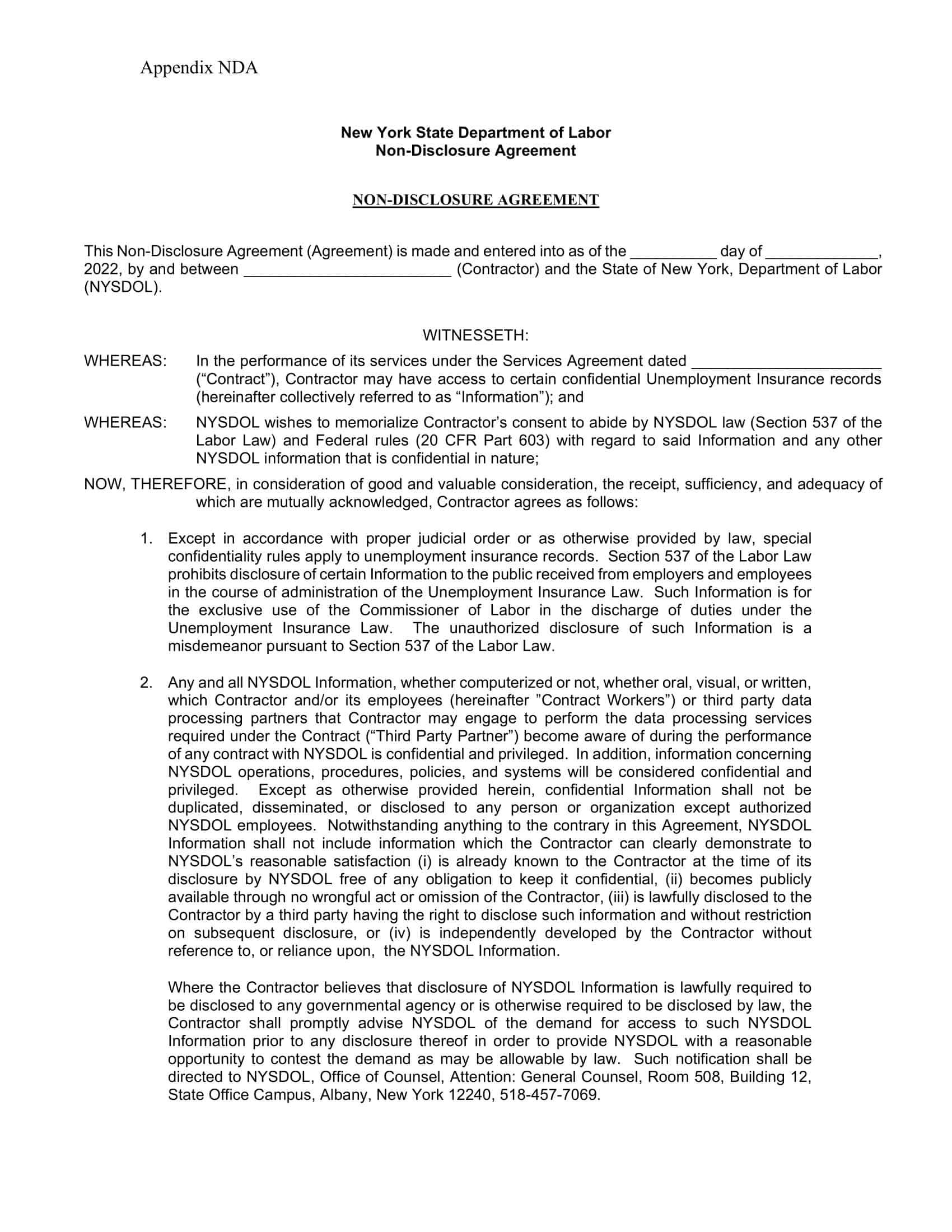




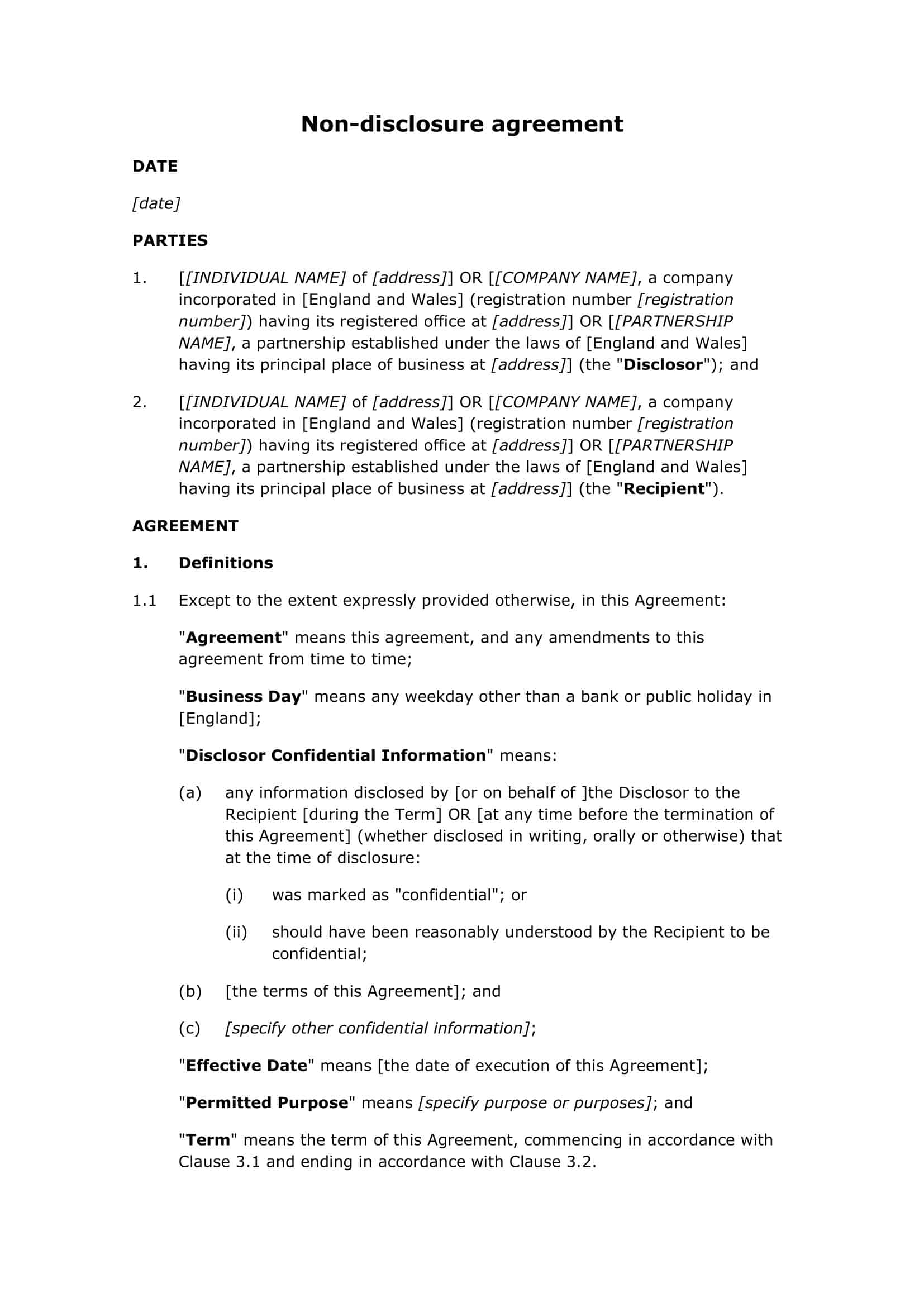

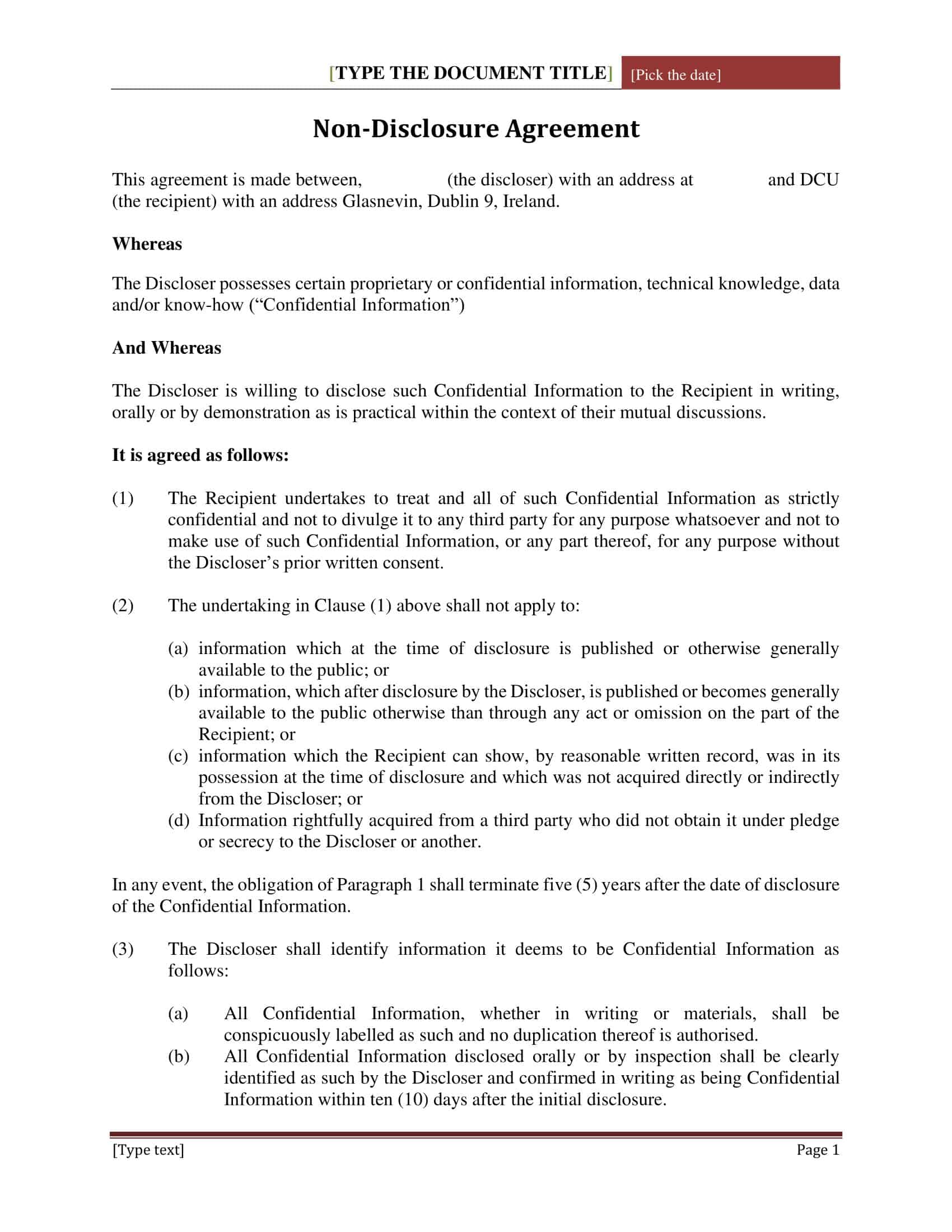















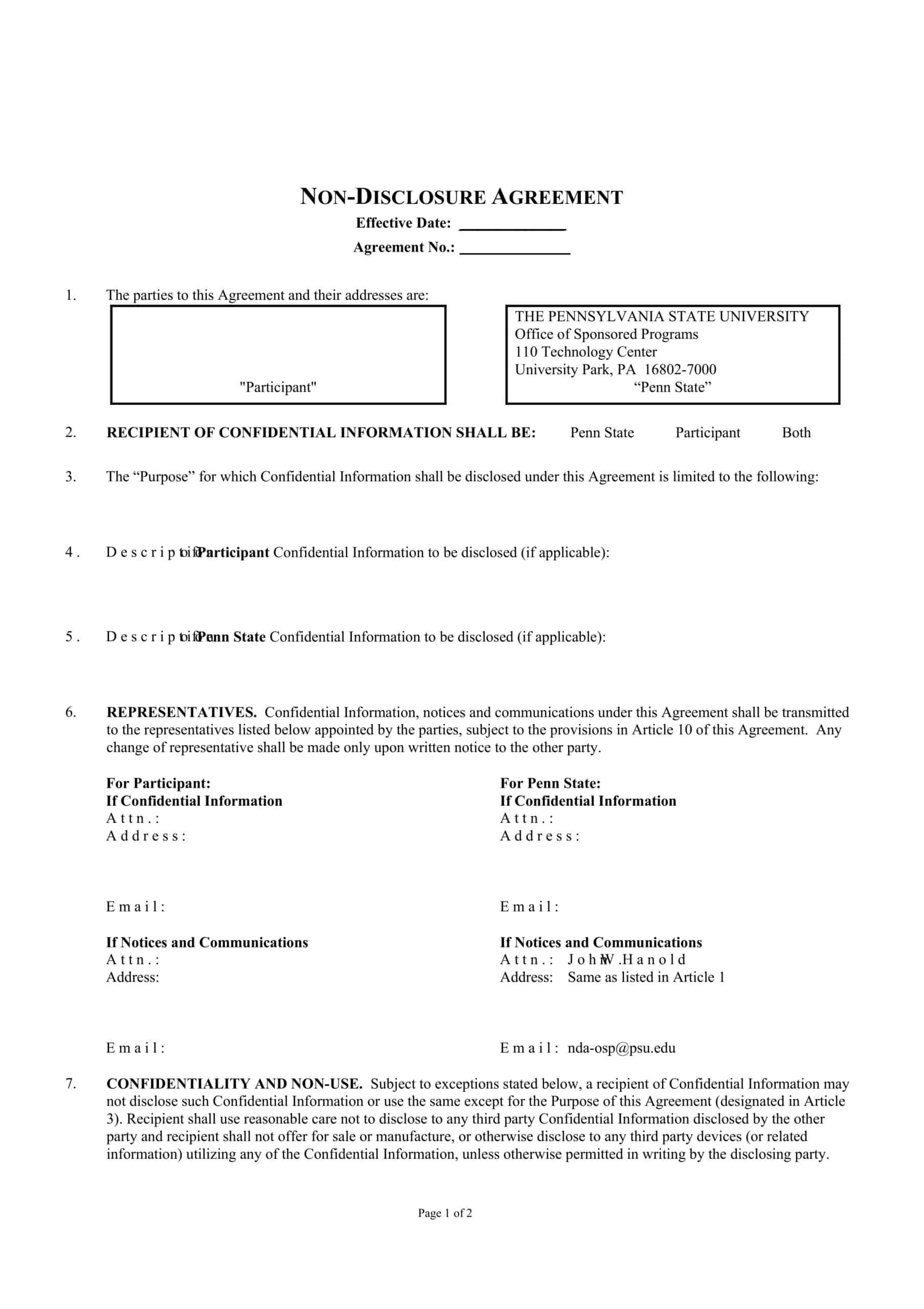




























![Free Printable Roommate Agreement Templates [Word, PDF] 2 Roommate Agreement](https://www.typecalendar.com/wp-content/uploads/2023/06/Roommate-Agreement-150x150.jpg)
![%100 Free Hoodie Templates [Printable] +PDF 3 Hoodie Template](https://www.typecalendar.com/wp-content/uploads/2023/05/Hoodie-Template-1-150x150.jpg)
![Free Printable Payment Agreement Templates [PDF, Word] 4 Payment Agreement](https://www.typecalendar.com/wp-content/uploads/2023/05/Payment-Agreement-1-150x150.jpg)
